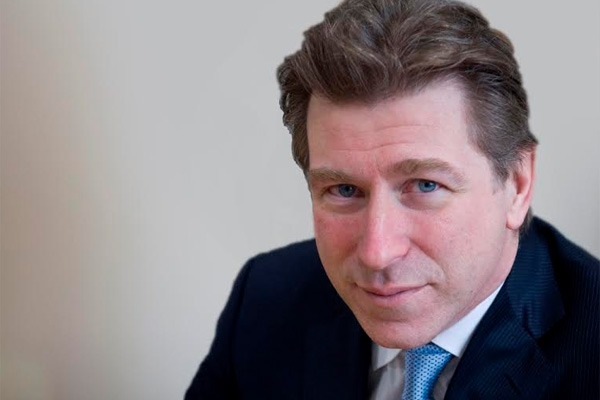
Tolchard ... regional growth has offset decrease by
inflows from emerging markets.
GCC capital flow into Saudi Arabia on the rise
DUBAI, September 14, 2015
The opening of the Saudi Stock Exchange to foreign institutional investors in June has contributed significantly to the direction of private capital flows in the GCC region, a report said.
The sixth annual Middle East Asset Management Study, launched today (September 14) by Invesco, a leading independent global investment management firm, has revealed a remarkable turnaround in the net respondent view scores on the direction of capital flow to Saudi Arabia, from -17 per cent last year to +61 per cent this year.
This is a significant finding in the context of low global oil prices and declining government surpluses in Saudi Arabia, the analysis said.
Last year’s study found the UAE, with its perceived “safe haven” status and strategic position as a hub between Asia and Africa, to be the main beneficiary of inflows of private capital into the GCC region. However while the UAE remains popular, with 73 per cent of respondents saying that investable assets and people are in net inflow into the UAE (compared to 89 per cent last year).
Bahrain has also seen a notable turnaround in sentiment on capital flows, moving from a 73 per cent net negative view score last year to a positive score of 27 per cent for 2015. There is a causal link here to Saudi Arabia as a key regional partner and although the stabilisation of Bahrain’s local political environment was a contributing factor to this sentiment, participants recognised that Bahrain is no longer a major financial centre and its fortunes are dependent on its neighbours.
Saudi success
The primary driver of inflows in Saudi Arabia was positive perceptions of the economy and the opening of Saudi capital markets. The opening of the Tadawul, Saudi Arabia’s stock market, to international investors in June this year, was eagerly anticipated by participants and seen by many as a first step towards market liberalisation and future reforms. Many expect this change to be a key driver of medium term capital inflows, even if it would only have a relatively small impact on capital flow in the short term.
Stock market performance and opportunities to participate in IPOs were named as the second most important drivers behind positive perceptions of capital inflows in Saudi Arabia. Respondents cited strong medium term performance for the Saudi stock market and a relatively robust recovery to the market shock following the OPEC announcement on oil production levels in December 2014.
Furthermore, 2014 saw some of the largest IPOs in the region, notably National Commerce Bank in Saudi Arabia and Emaar Malls in the UAE. The overall deal value for IPOs on the Saudi Arabia stock market rose significantly in 2014 and is approaching the levels seen in 2007 before the global financial crisis. Some family businesses in the region now see an IPO as an excellent way to raise capital, improve governance and resolve succession planning issues in one go.
Nick Tolchard, head of Invesco Middle East, said: “Our conversations in the region show that whilst there has been optimism surrounding the regional economy and capital markets, concerns such as the oil price and government finances persist. Whilst things can change quickly in the Middle East, it will be interesting to see if positive sentiment amongst local, especially Saudi, investors translates into reality over the next 12 months and whether the anticipated effects of the opening of capital markets take hold.”
Declines in inflows from EM offset by regional growth
An example of a rapid year-on-year reversal in sources of capital inflows is the decline in private capital coming into the UAE from Emerging Markets, including Russia. Last year’s study showed inflows from Emerging Markets at 58 per cent, dropping down to 41 per cent this year. Flows from Russia in particular are thought to have been affected by the decline in the rouble reducing the buying power of affluent Russians in the UAE real estate and tourism sectors.
“This decline in Russian capital inflows may be cyclical given the strong and ongoing ties between Russia and the GCC. Furthermore, in 2015 greater capital inflows from Mena and other GCC markets have offset declines from Emerging Markets,” Tolchard said.
“These findings underline the diversified nature of the UAE economy, especially with capital flowing increasingly from Mena and the GCC. This could be transformational for the UAE given the longer term profile of GCC capital inflows and is a much more stable and sustainable source of capital than relying on negative events in international markets causing short-term capital flight.”
“The opening of capital markets is certainly an encouraging development that has the potential to impact positively on investment in the region,” Tolchard explained.
“Looking across retail and institutional investor segments, we have seen that sovereign investors are viewed as leaders on investment strategy and asset allocation so smaller institutional investors and family offices often follow their example.
“Sovereign investor participation in stock markets, IPOs and bond issuances has helped to create the GCC financial markets for other investors and the scale of sovereign assets contributes to the confidence levels of retail investors in the region. It will be fascinating to keep monitoring how these developments and relationships will drive capital flow and asset allocation decisions in the region,” he concluded. – TradeArabia News Service







